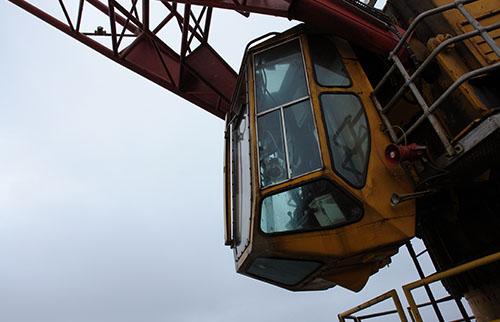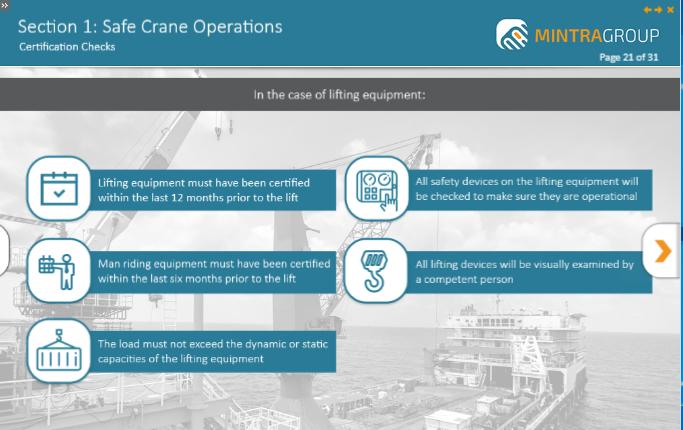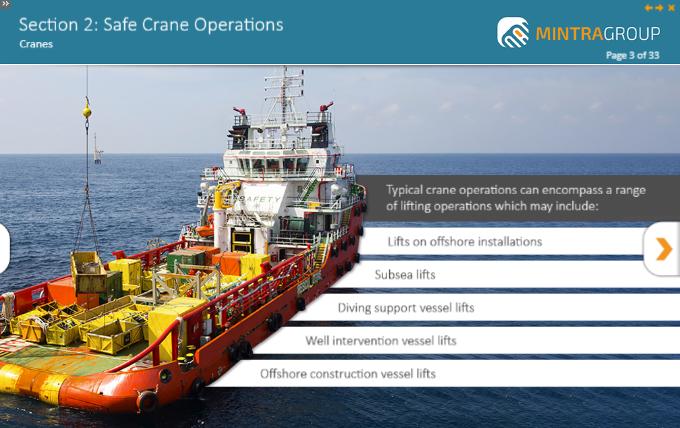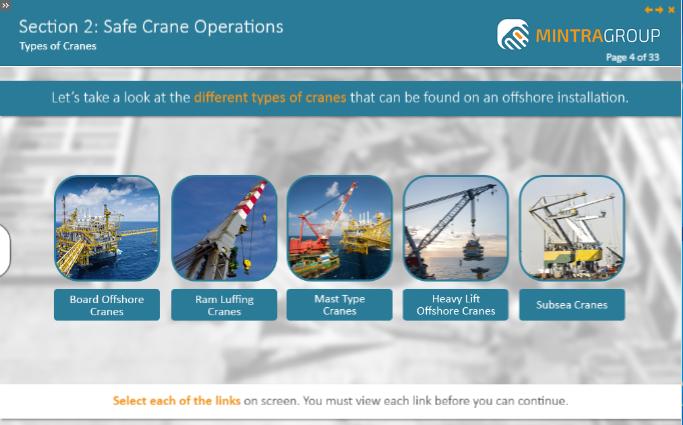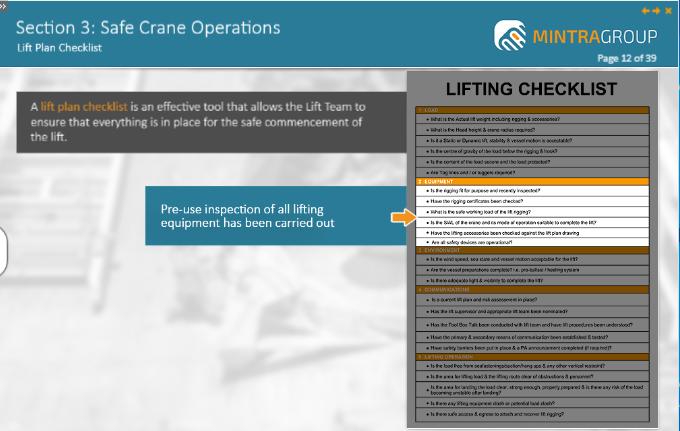Buy and assign to
multiple learners
Instant access
via email link
Instant certificate
via email
Further Information - Safe Crane Operations Training
Description
Who is this course for?
This Safe Crane Operations Training course is aimed at personnel involved with mechanical material handling equipment and operation, crane operation, rigging, supervision and signalling related activities.
Is previous experience required?
You do not need prior knowledge or experience to complete this course and it is assumed that you are competent in your designated role
How will this course benefit me?
To provide learners with an awareness of industry best practice for working with cranes
This course consists of 4 sections:
Section 1: Introduction to Crane Operations
Section 2: Cranes and Lifting Equipment
Section 3: Planning a Lift
Section 4: Carrying out a Lift
How will this course benefit my company?
By ensuring you are aware of industry best practice for working with cranes
What standards are referred to in this course?
• The Lifting Operations and Lifting Equipment Regulations (LOLER)
• The Provision and Use of Work Equipment Regulations (PUWER)
• The Safe Use of Lifting Equipment: Approved Code of Practice (ACOP)
• Lifting Equipment at Work Guidance
• Personal Protective Equipment at Work Regulations
• Health and Safety at Work Act s.16
• Management of Health and Safety at Work Regulations
Is there an assessment?
Once you have completed the course, you will be asked a series of questions to check your knowledge and understanding. These are based on the learning objectives for the course and have a pass mark of 80%.
Learning Objectives
• Give an overview of the types of crane operations commonly undertaken in the Oil and Gas Industry
• Give an overview of the relevant legislation and regulations governing lifting operations and the safe use of cranes
• Outline the Dropped Objects Prevention Scheme (DROPS) programme
• Describe the relevant roles and responsibilities involved in crane operations
• Describe the role of the Crane Operator
• Describe the role of the Banksman
• Describe the role of the Slinger
• Describe the role of the Deck Foreman and crew
• Describe the role of marine crew
• Outline the importance of training, competence and certification
• Identify different types of common offshore cranes
• Describe the use of tag lines
• Explain what is meant by ‘rated capacity’ and the importance of using a Rated Capacity Indicator
• Describe how to use a load chart
• Explain what is meant by ‘safe working load’
• Identify the hazards that can be associated with crane operations
• Explain the importance of planning a lift
• Give examples of typical operational limitations which can impact safe crane operations
• Identify the documentation that each lift should have
• Describe how to complete a lift plan
• Explain what should be covered in a lift plan checklist
• Describe the risk assessment process and explain its importance in safe crane operations
• Describe what should be discussed at a typical Toolbox Talk
• Give an overview of the individual responsibilities involved in planning a lift
• Describe the importance of constant communication during crane operations
• Describe the hand signals commonly used in lifting operations
• Give an overview of the requirements for radio communication during a lifting operation
• Describe the pre-operational checks that should be carried out before any crane operation
• Describe how to safely carry out typical crane lifts
• Explain what is meant by a ‘blind lift’ and the requirements that must be in place when one is carried out
• Explain what to do during helicopter operations
• Give an overview of the requirements for lifting dangerous goods
• Explain the impact that weather conditions can have on crane operations
• Describe typical crane maintenance and inspection requirements
• Explain what to do in the event of a crane malfunction or an emergency situation
• Describe the importance of stopping the job
• Explain the importance of Lessons Learned
Assessment
Exam in the e-learning course
System Requirements
• Internet access - users will need a device with a web browser and internet connection
• System - runs on computers, tablets and mobile devices using Windows 7 and above and MAC OS devices running IOS 11 and above
• Browsers - Edge, Chrome, Firefox and Safari
• Minimum browser size – none
• Audio – requires device speaker or headphones
Reviews
Insights & News
At Mintra, we're so much more than just a team—we're a force driving innovation and excellence in maritime training across Europe.
We’re excited to be taking the stage at one of Europe’s leading showcases of organisational learning.
We are delighted to share the exciting news that our People and Culture team has been shortlisted for the prestigious cHeRries Awards!
